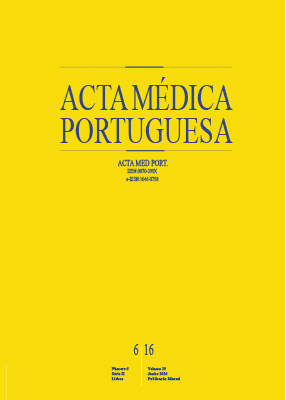Auditory Neuropathy: Clinical Evaluation and Diagnostic Approach
DOI:
https://doi.org/10.20344/amp.6942Keywords:
Auditory Neuropathy, Evoked Potentials, Auditory, Brain Stem, Hair Cells, Auditory; Hair Cells, Inner; Hair Cells, Outer, Mononeuropathies.Abstract
Introduction: Auditory neuropathy is a condition in which there is a change in the neuronal transmission of the auditory stimuli. Our objective was to describe the patients’ series within the clinical spectrum of auditory neuropathy.
Material and Methods: We designed a transversal, retrospective study, with a description of a consecutive case series. Auditory neuropathy was defined by the presence of acoustic otoemissions plus absent/abnormal auditory brainstem responses with cochlear microphonism.
Results: 34 patients with bilateral hearing loss, 23 males and 11 females, were included in the study. Eighty percent of the cases had congenital onset of hearing loss. Acoustic otoemissions were absent in 67% of them. Cochlear microfonism was present in 79% of all cases. Prenatal, perinatal or ambiental factors were present in 35.2% of the cases.
Discussion: Medical literature shows great variability in findings related to auditory neuropathy, both in its etiology and epidemiological data.
Conclusion: Auditory neuropathy presents a broad spectrum of changes that may result from mild to severe changes in the functioning of the auditory pathway, and in our sample we observed that 80% of Auditory neuropathy have congenital onset of hearing loss and/or with cochlear microphonism identified. 91% of patients experience significant hearing impairment and 53% suffer from severe or profound deafness.
Downloads
Downloads
Published
How to Cite
Issue
Section
License
All the articles published in the AMP are open access and comply with the requirements of funding agencies or academic institutions. The AMP is governed by the terms of the Creative Commons ‘Attribution – Non-Commercial Use - (CC-BY-NC)’ license, regarding the use by third parties.
It is the author’s responsibility to obtain approval for the reproduction of figures, tables, etc. from other publications.
Upon acceptance of an article for publication, the authors will be asked to complete the ICMJE “Copyright Liability and Copyright Sharing Statement “(http://www.actamedicaportuguesa.com/info/AMP-NormasPublicacao.pdf) and the “Declaration of Potential Conflicts of Interest” (http:// www.icmje.org/conflicts-of-interest). An e-mail will be sent to the corresponding author to acknowledge receipt of the manuscript.
After publication, the authors are authorised to make their articles available in repositories of their institutions of origin, as long as they always mention where they were published and according to the Creative Commons license.









